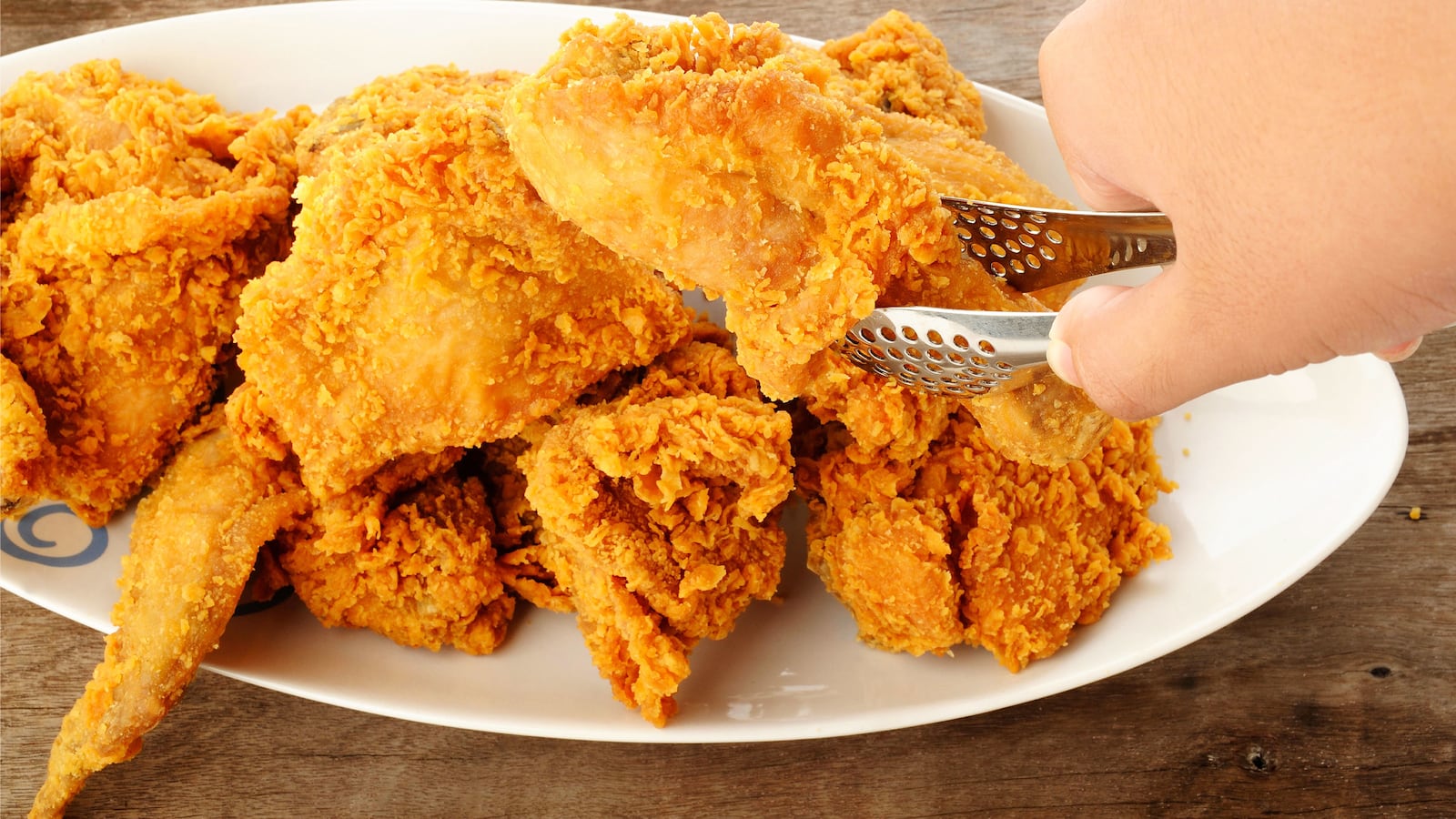One of the only recipes my grandmother taught me before she died was how to make her fried chicken. For most of my life, I didn’t think the dish could be improved upon. While she never gave me written instructions, the process is ingrained in my memory, having watched her do it so many times. And it always resulted in a delicious meal, so why mess with tradition, right?
Well, despite my nostalgia for this family recipe, there was plenty of room for improvement, as there often is. After speaking with chef Edward Lee about fried chicken, which he’s spent most of his career perfecting, I had to admit that a few subtle updates would result in a better fry.

And, oh my stars (to borrow one of grandma’s favorite expressions), it did. Though Lee’s recipe didn’t reinvent the fried chicken wheel, his tips created a crispier crust and far more tender meat than I had ever achieved before. All it required was lots of buttermilk, one empty egg carton saved from my recycling bin and an afternoon spent re-seasoning Grandma’s old Griswold No. 9 cast-iron skillet.
The James Beard Award-winning author and owner of 610 Magnolia in Louisville, Kentucky, and culinary director of Succotash, in Washington, D.C., is quite vocal about his love for fried chicken, whether in its classic form or in one of the many equally delicious variations he’s developed over the years.
So, whether you’re a fried chicken rookie or you’re curious to see if you can inject new life into your family’s recipe, Lee’s advice will help you achieve the perfect contrast between crispy crust and tender chicken every time.
To end up with the best tasting fried chicken, Lee recommends starting off with bone-in dark meat. “Flavor-wise, you’re better off using drumsticks, thighs and even wings—they’re the best for fried chicken.” (If you have full chicken legs, he advises that you divide them at the joint before proceeding.) And it’s best to avoid using the breast, since it won’t fry well. “The size is uneven and it doesn’t make for good fried chicken.”
As far as quality of the meat you’re using, don’t go too far out of your way to find organic meat. Free-range chickens tend to have better flavor, but can be a bit leaner because “they get more exercise.”
“Fried chicken is going to be delicious regardless,” says Lee. “It may be one of the few things where just a regular old commodity bird is just as good as the organic. Most of the fried chicken that we eat comes from commodity chicken and, while their practices are not something that I espouse, the meat flavor and quality is actually fine because 90 percent of the joy of eating fried chicken is that crunchy, salty, fatty flavor. You know, you’re not going to eat it every day—it’s a treat.”
Once you have your chicken pieces, put them in a mixing bowl and “marinate them in buttermilk overnight to tenderize the meat and add a little flavor,” says Lee.
Don’t have buttermilk on hand? Don’t worry, there are a few ways around it. “Unflavored yogurt does the exact same thing,” says Lee. “You can also literally just use [regular] milk with a squeeze of lemon juice in it.” And if you don’t have either of those things, you can heavily salt the chicken and let it cure on a sheet pan in the fridge for about an hour.
When you’re about ready to start dredging and frying, drain the chicken—Lee says this step is “really important.” Once it is drained, salt and pepper the pieces liberally. “Whatever you think is enough salt and pepper, add a bit more,” he says.
This is the vital step that will ensure your fried chicken is as crispy and crunchy as humanly possible.
First, prepare your flour mixture. Mix all-purpose flour with salt, pepper and some hot paprika if you have it on hand. “I don’t go too crazy with [the seasonings] because I think the flavor gets lost, but salt, pepper and a little paprika is good,” says Lee. “You’re going to dip your chicken in the buttermilk and then you’re going to dredge or roll it in the flour.”
As each piece of chicken comes out of the flour mixture, either lay it on a wire rack or prop it up in an egg carton. Just start this process in the center of the carton rather than on one end, so it doesn’t immediately tip over.
“The trick to a true fried chicken crust is you’re actually creating the crust before you deep fry in your oil,” says Lee. “You can’t dredge and put the chicken in your frying oil right away. What happens is when you dip your chicken in the buttermilk and then roll it in flour, it is still a layer of chicken, a layer of buttermilk and a layer of flour.”
If you don’t wait for the crust to form, those layers will immediately separate upon hitting the hot oil. He also adds that if you let the chicken rest on a flat surface without airflow (humid conditions may also prove a challenge), the crust will bond to whatever it’s touching rather than to the chicken. Each piece of chicken should sit for a “good 15 minutes” before going into the frying oil. “Don’t disturb it,” says Lee. “Just literally leave it alone.”
While your chicken is drying, it’s time to bring your oil to the perfect frying temperature. Since you probably don’t have a deep fryer at home, Lee recommends adding two inches of canola oil, Crisco or “anything that has a high [cooking] temperature” to a large pan with high sides—cast iron, if you have it. You can even use a big pot, but Lee recommends steering clear of short-sided sauté pans when frying chicken.
The ideal oil temperature is about 350–370 degrees. When it’s heated, you can begin adding the chicken.
“Very gently lay it in there,” says Lee. Be gentle for two reasons: You don’t want oil to splash out and burn you, but you also don’t want your chicken to fall and touch the bottom of the pan because the breading will stick. And fry only a few pieces at a time, so the oil doesn’t drop in temperature.
“The top part [of the chicken] will float, so it will look like only the bottom part is cooking, not the top part, and you’ll have this urge to like start flipping it right away,” says Lee. “You don’t want to disturb that cook, so just leave it in there for a good five minutes and don’t touch it. Just kind of nudge it just to make sure it’s not sticking to the bottom.”
After five minutes, you can flip the chicken over again and continue flipping it over every two minutes. Depending on the size of the chicken pieces, it will need to cook for between 12 and 16 minutes. If you’re unsure, cut into a piece to check that the juices in the chicken run completely clear.
“If you don’t disturb the chicken and you let the oil do its thing and the oil is consistently 350 degrees, but lower than 370, you will have a perfect crust,” says Lee. “At that point, you take it out, drain it on paper towels, give it another little salt sprinkle on top and let it rest [on a wire rack] for a few minutes. Then you’re ready to go. It’s really simple.”
While fried chicken doesn’t necessarily need any extra seasonings, Lee likes to add a hint of contrasting sweetness. “My daughter and I like to sprinkle just a little bit of salt and just a tiny drizzle of honey,” says Lee. “And it’s fantastic.”

